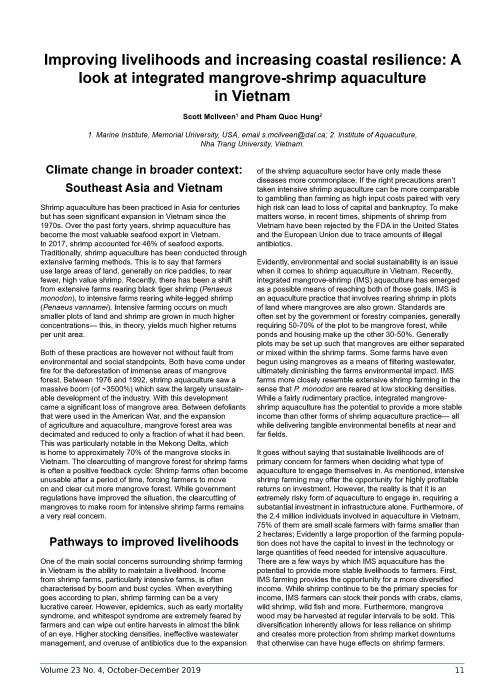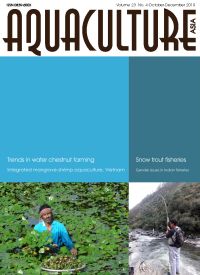Improving livelihoods and increasing coastal resilience: A look at integrated mangrove-shrimp aquaculture in Vietnam
18 December 2019 | Scott McIlveen and Pham Quoc Hung | 1886 Downloads | .pdf | 183.83 KB | Aquatic plants, Livelihoods, gender and social issues, Shrimp, Vietnam
The shrimp aquaculture industry has seen considerable expansion in Southeast Asia since the 1970s. Globally, Vietnam currently has the most area devoted to shrimp in addition to being the second largest exporter. While shrimp aquaculture has brought about financial returns, it has also brought about the deforestation of considerable amounts of mangrove forest.
In the last decade, integrated mangrove-shrimp aquaculture has emerged as a means of cultivating shrimp while maintaining the benefits of rearing shrimp in their natural environment. Furthermore, mangrove-shrimp aquaculture provides an additional means for farmers to secure livelihoods as mangrove wood may be harvested for sale and mangrove environments allow for additional financially-valuable species to be harvested.
Increased mangrove coverage provides considerable benefits to ecosystems and communities. Shrimp reared in mangrove forests have been shown to be much less susceptible to disease providing much more financial stability than the typical boom or bust cycles of the shrimp aquaculture industry.
Mangrove forests have also been shown to increase coastal resilience to climate change as they mitigate the effects of climate change and erosion. This research attempts to assess the feasibility of large scale implementation of integrated mangrove-shrimp aquaculture in coastal Vietnam.
Creative Commons Attribution.

